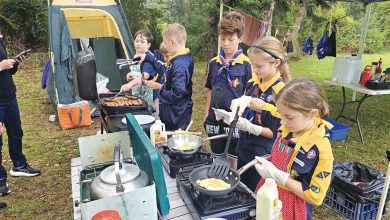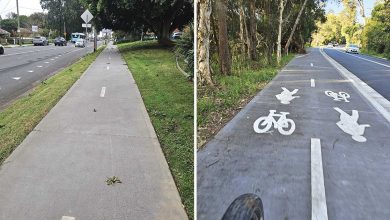Waste not, want not – Waste Survey
Have you heard about the war on waste? Well it’s happening here in the Hawkesbury too! A Waste Survey will be conducted in the Hawkesbury this month to get a community snapshot into what’s going into household bins and how we might be able to do it better.
Now before you start thinking this is a rubbish survey, think again, because Council really needs to know how we are getting rid of our ‘waste’ so that we can work out how to recycle more and preserve room in our landfill.
Councils across NSW carry out similar Waste Surveys to satisfy the NSW Environment Protection Authority’s (EPA) requirements. The Waste Survey, which is funded by the EPA, will allow Council to analyse how to make further improvements for domestic waste collections.
Conducted every three years, Council will use the Waste Survey to ensure its current waste and recycling services are meeting your needs – the needs of the community. The information will also help develop future planning for bin collection services, waste education and waste infrastructure – such as recycling and composting facilities, the number of garbage or recycling trucks needed and landfill requirements.
Survey contractors will collect the contents from general waste, recycling and garden organics bins from 220 randomly selected households. The survey will include the collecting and bagging of bin contents from households in both town and rural localities. The collection will take place from the kerbside on a household’s normal waste collection day. It will then go to an external site to be analysed. Conditions of the project prohibit the public reporting of any specific details related to any personal information, meaning the data collected is confidential.
The 2014 Waste Survey showed that the contents of the general waste bins consisted of 19% Recyclables, 12% Garden Organics and 29% Food Waste. This revealed that only 40% of the general waste surveyed was actually material that should go to landfill.
Waste Surveys are an important tool in helping Council to deliver targeted waste education. Contamination makes the service more expensive; it can cause injury to workers sorting the materials, and it can also result in truckloads of recycling or garden organics going to landfill.
For further information, visit Council's website at www.hawkesbury.nsw.gov.au, for a range of great resources such as the A-Z Reuse and Recycling Guide for the Hawkesbury and the Household Waste Guide 2016-2017 call Customer Service on (02) 4560 4444.
Hawkesbury statistics:
There is a 7% contamination rate in Hawkesbury recycling bins – state average is 7.3%.
Hawkesbury residents recycle on average 540 tonnes per month, 6480 tonnes per year
17% of Red Lid Waste Bin contents from the Hawkesbury is recyclable
22% of Red Lid Waste Bin content from the Hawkesbury is food waste. Why not stop that going to landfill? You can currently purchase a compost bin for $29.90 or worm farm for $44.90 which is 70% off RRP by being a part of Council’s Compost Revolution program. See Council’s website for information or direct link https://compostrevolution.com.au/hawkesbury
Frequently asked questions
What can go in recycling bins?
Newspapers, magazine, junk mail, cardboard, glass bottles and jars, milk and juice cartons, steel/tin and aluminium cans, aluminium foil/trays, empty aerosols (like bug spray, deodorants, air fresheners), all hard plastic containers (like ice-cream containers, margarine tubs, fruit and vegetable punnets, salad dressing and sauce bottles, shampoo/conditioner bottles, dishwashing liquid and laundry powder/liquid bottles.
What can’t go in recycling bins?
Recycling in plastic bags, plastic bags, food scraps, polystyrene (foam), plastic wrapping and cling film, plastic packets (like chip packets, pet food bags, lolly and ice-cream wrappers, muesli bar wrappers, bread bags, rice and pasta bags, etc.), electronics, clothing/textiles (including shoes, backpacks, sheets and towels), toys (hard or soft), garden waste, tissues/serviettes/face wipes/paper towel, shredded paper, nappies, medical waste, chemicals, building materials. Also, you can only recycle packaging items made of plastic, steel, aluminium and glass. Therefore, no hard plastic items such as toys, furniture, washing tubs, buckets, plastic pots, etc. can go in recycling. No plastic or metal coat hangers, scrap metal or other glass such as window glass, drinking glasses or light globes can go in recycling.
Tissues, serviettes and shredded paper are made from paper so why can't they go in the recycling bin?
Every time things are recycled the quality is reduced. Paper products like tissues and serviettes may be contaminated so they should not go in the recycling bin. However, even if they haven't been used, they are still not worth recycling as the quality is so low. Shredded paper causes problems at the recycling facilities as it gets caught in machinery.
There are so many different plastics, how do I know if a plastic item can be recycled or not?
Try to scrunch it up in one hand. If you can scrunch it into a ball without much effort and using only one hand, then it is considered 'soft plastic' and should not be put in the recycling bin. Some examples of soft plastic are chip packets, pet food bags, lolly and ice-cream wrappers, muesli bar wrappers, bread bags, rice and pasta bags.
What can go in garden organics bins?
Grass clippings, fresh or dry leaves, cut flowers, pruned bushes, sticks (no longer than 40cm in length and 10cm in diameter) and garden weeds.
What can’t go in garden organics bins?
Plastic bags and liners, garbage, tree stumps, food waste, animal droppings and wastes, terracotta and plastic pots, string and hoses, soil.
How do my bins have to be presented for collection?
Please place your bins out by 4am on the day of collection (if you have morning collections) or by 4pm (if you have afternoon collections). Bins should be spaced at least 1m apart and clear from trees, cars and other obstructions. Lids should be fully closed and the lid opening should be facing the road.










